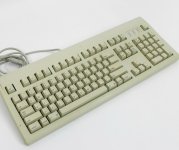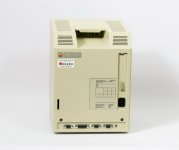My dad to the rescue! He has some three core wire and three electrical tester screwdrivers I can borrow, so I'll be getting those this afternoon.
As an aside, I don't have a keyboard or mouse for this classic, so I went on eBay and as a complete stroke of luck, the same shop I bought my two dead classics from had just listed an AppleDesign keyboard, fully working, for only £29,00 with free postage!
That is EXCESSIVELY cheap for a working AppleDesign keyboard in this condition. They also have a Macintosh 128 and Macintosh 512 for £249,00 and £149,00 respectively, and they are listed as non working but look in fantastic condition.
I'm wondering if Vintage Mac (a rip off shop that tried to sell my broken classic for £599 and that 512 for £1700!) has went under and they've just gotten the old stock. I am so tempted to buy both of these.
https://www.ebay.co.uk/str/excesstechnology




